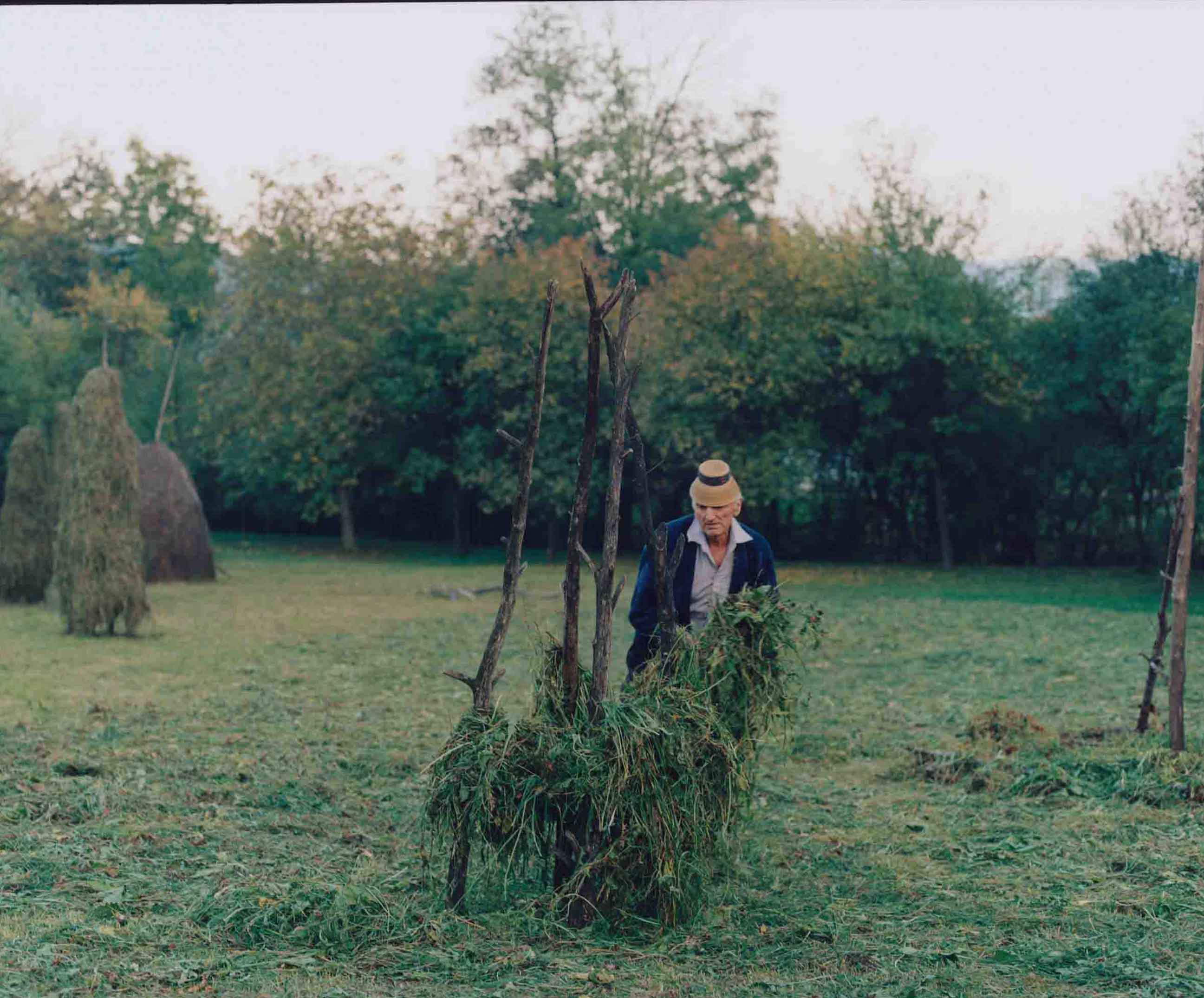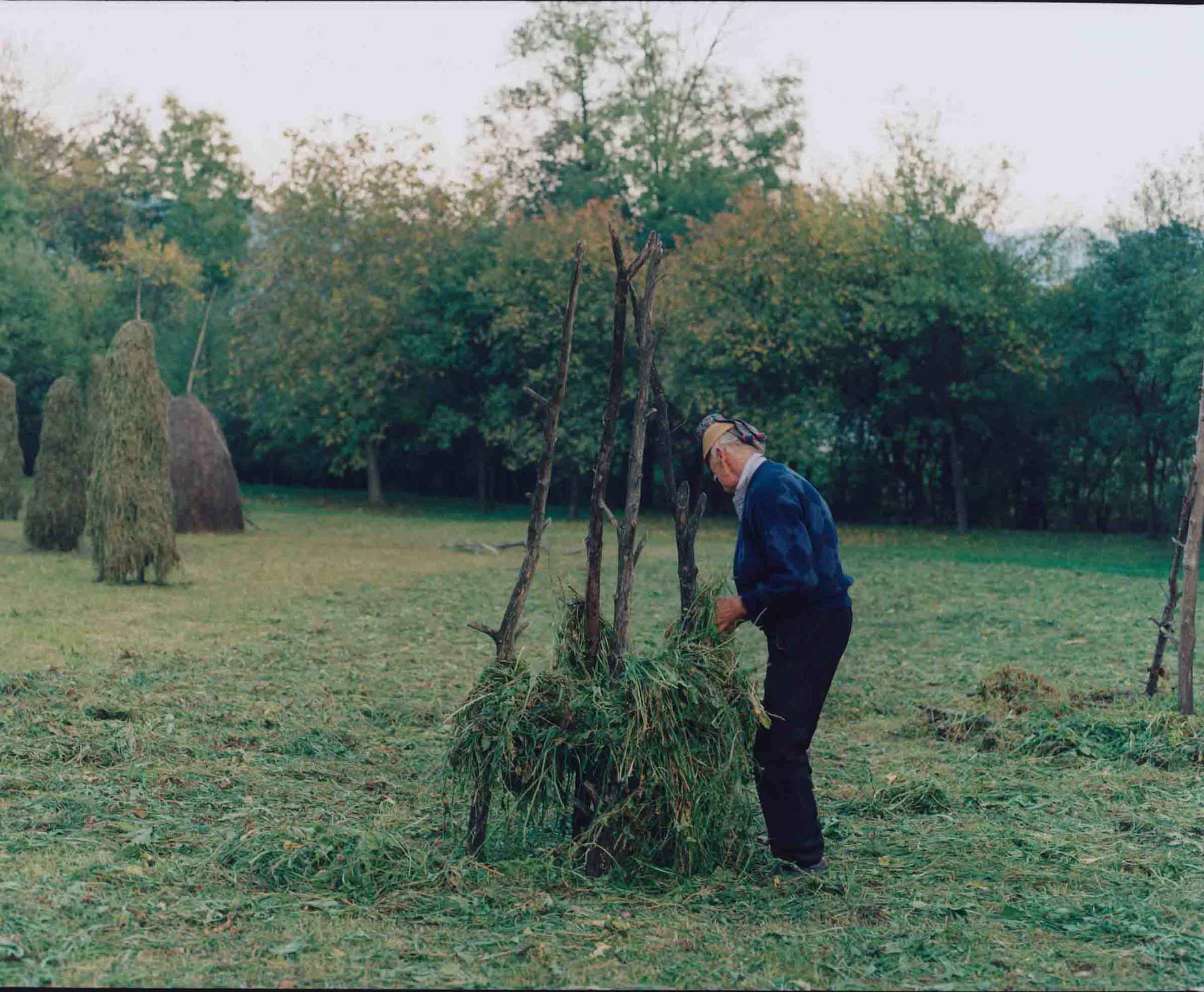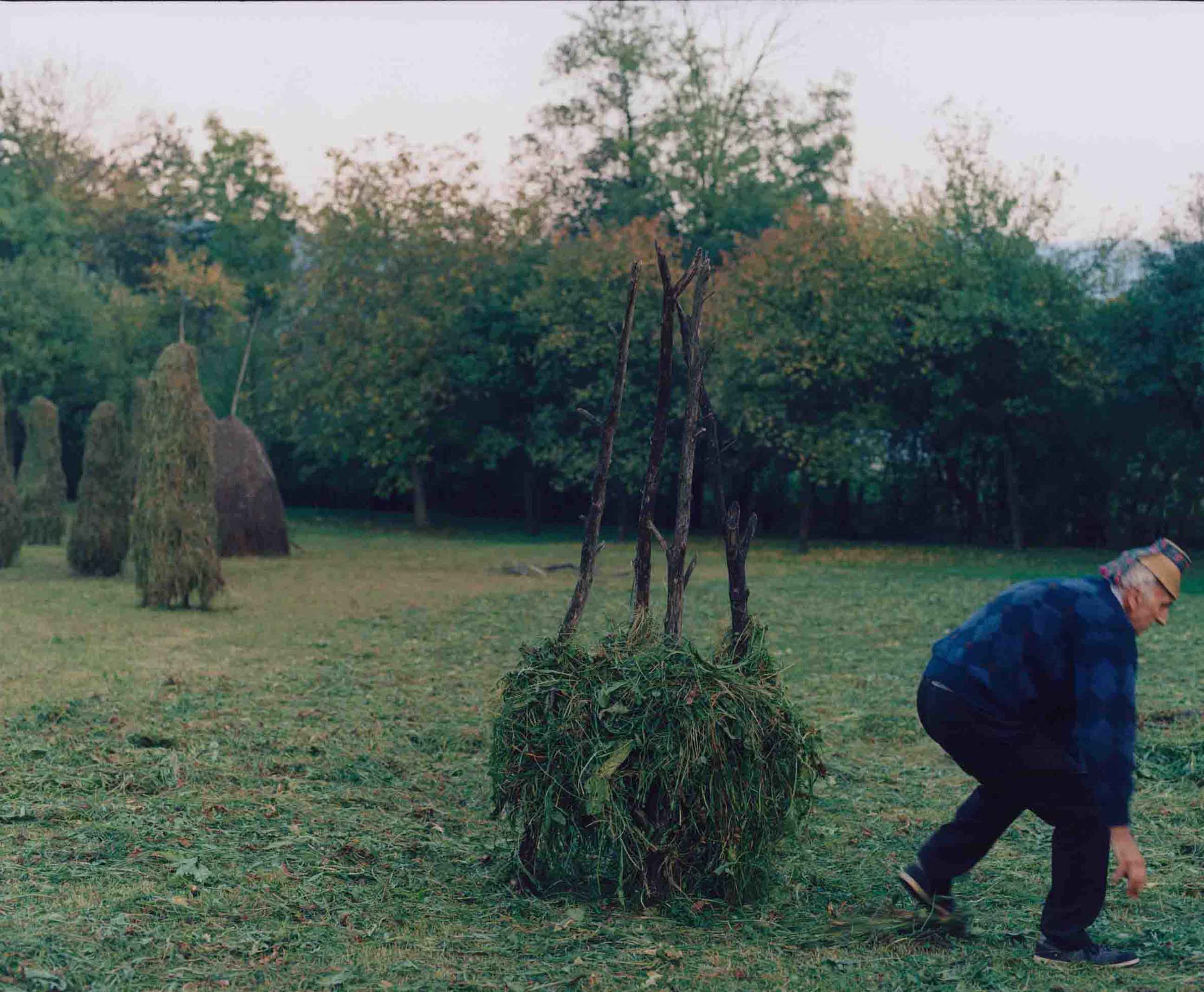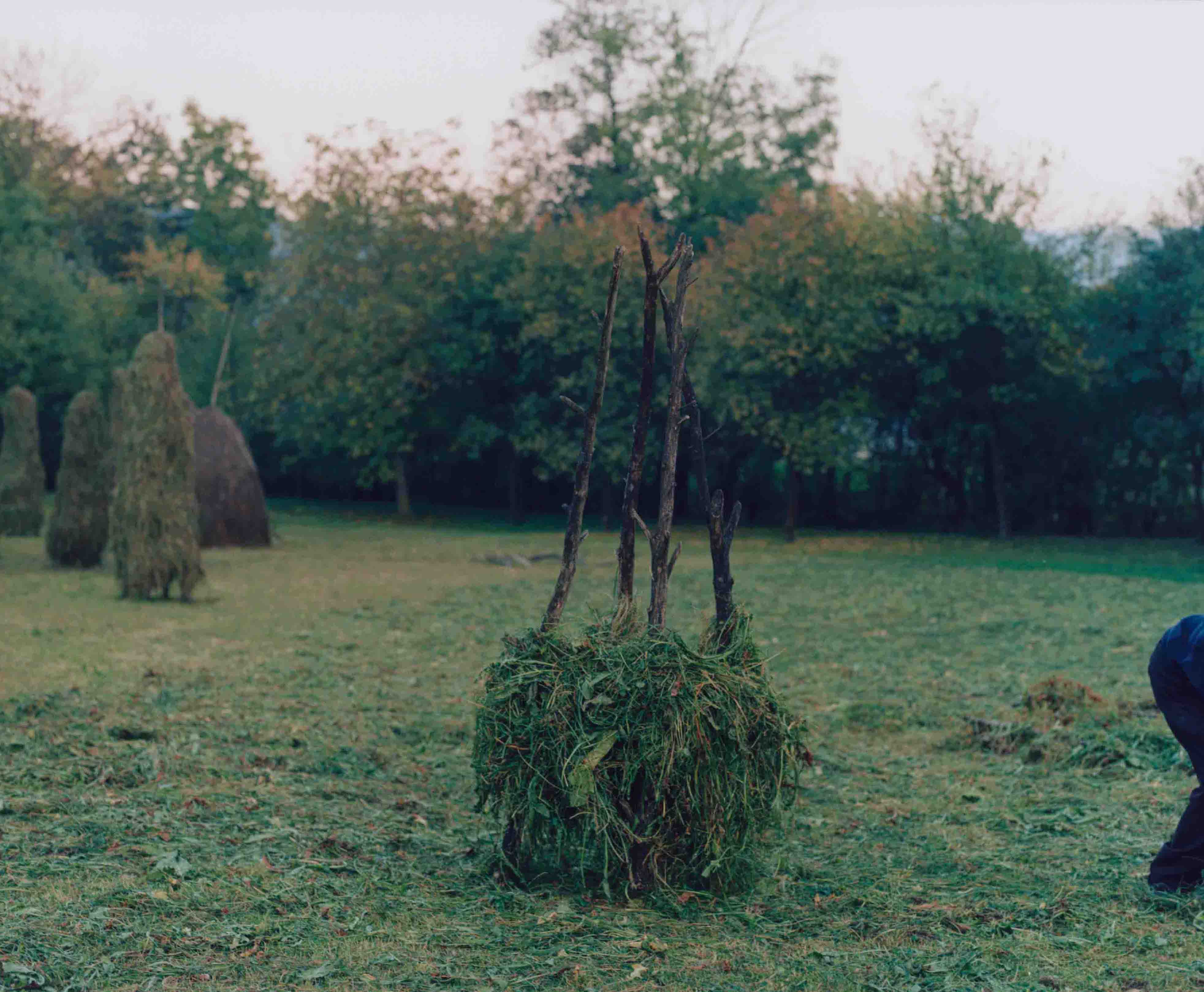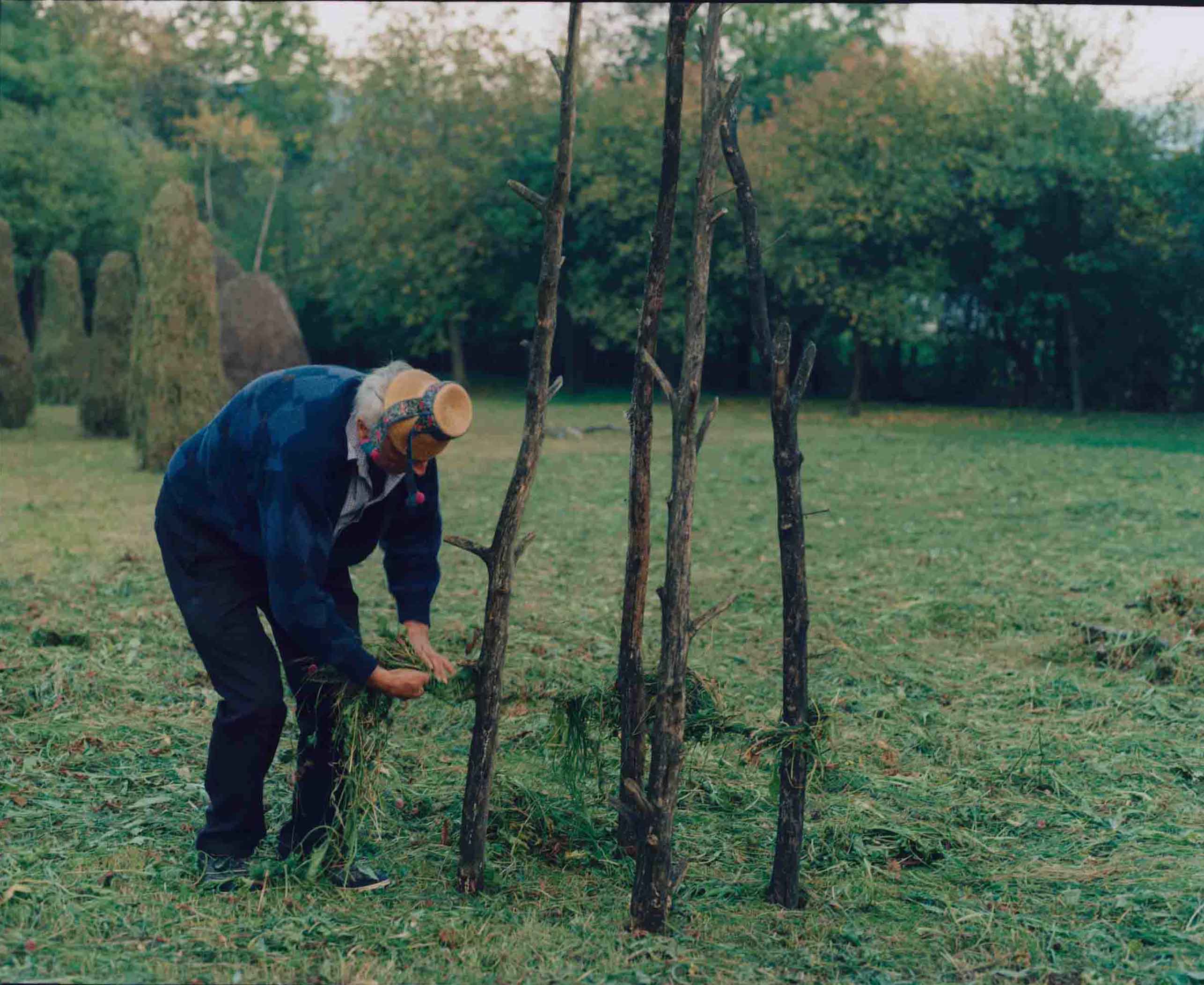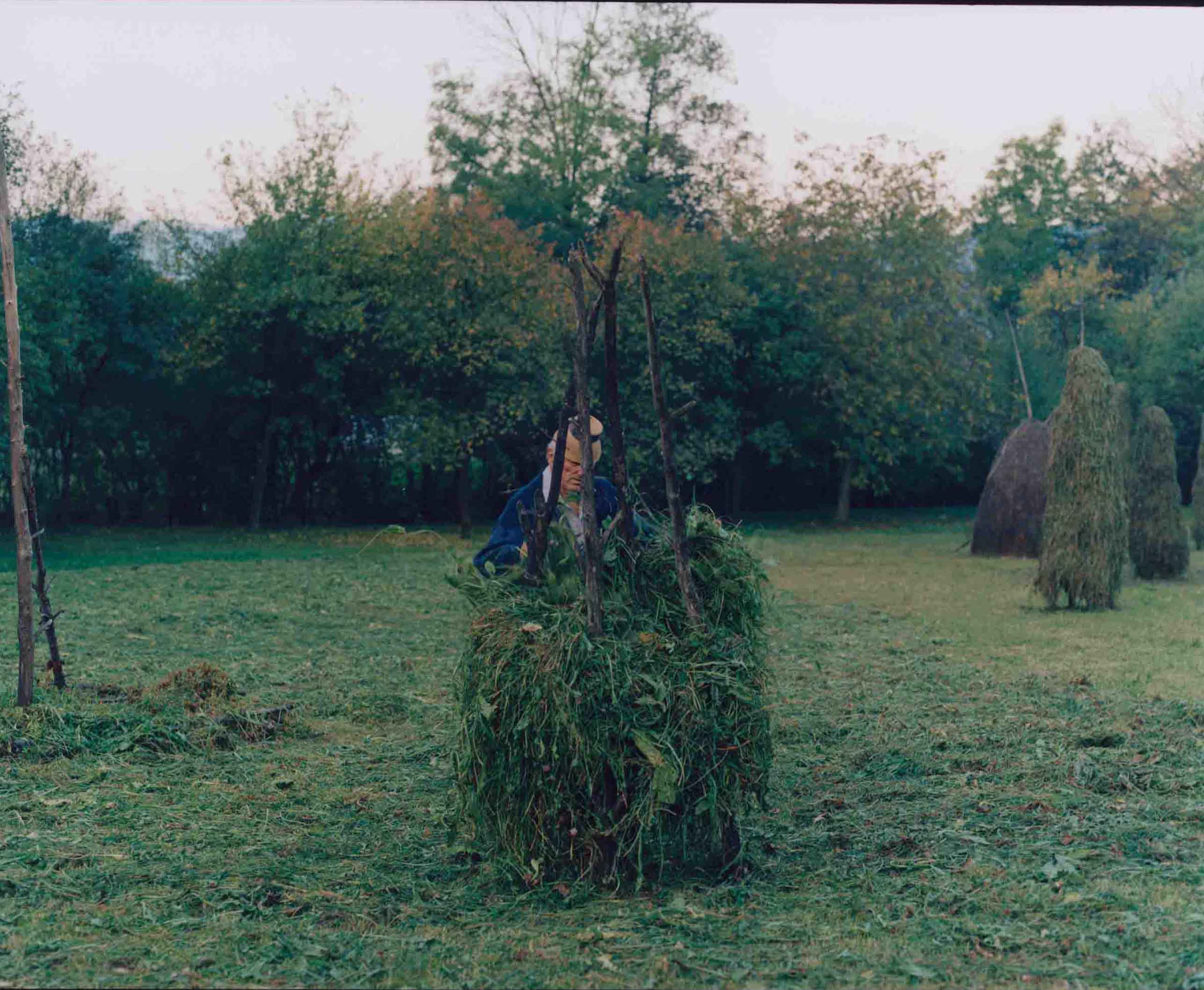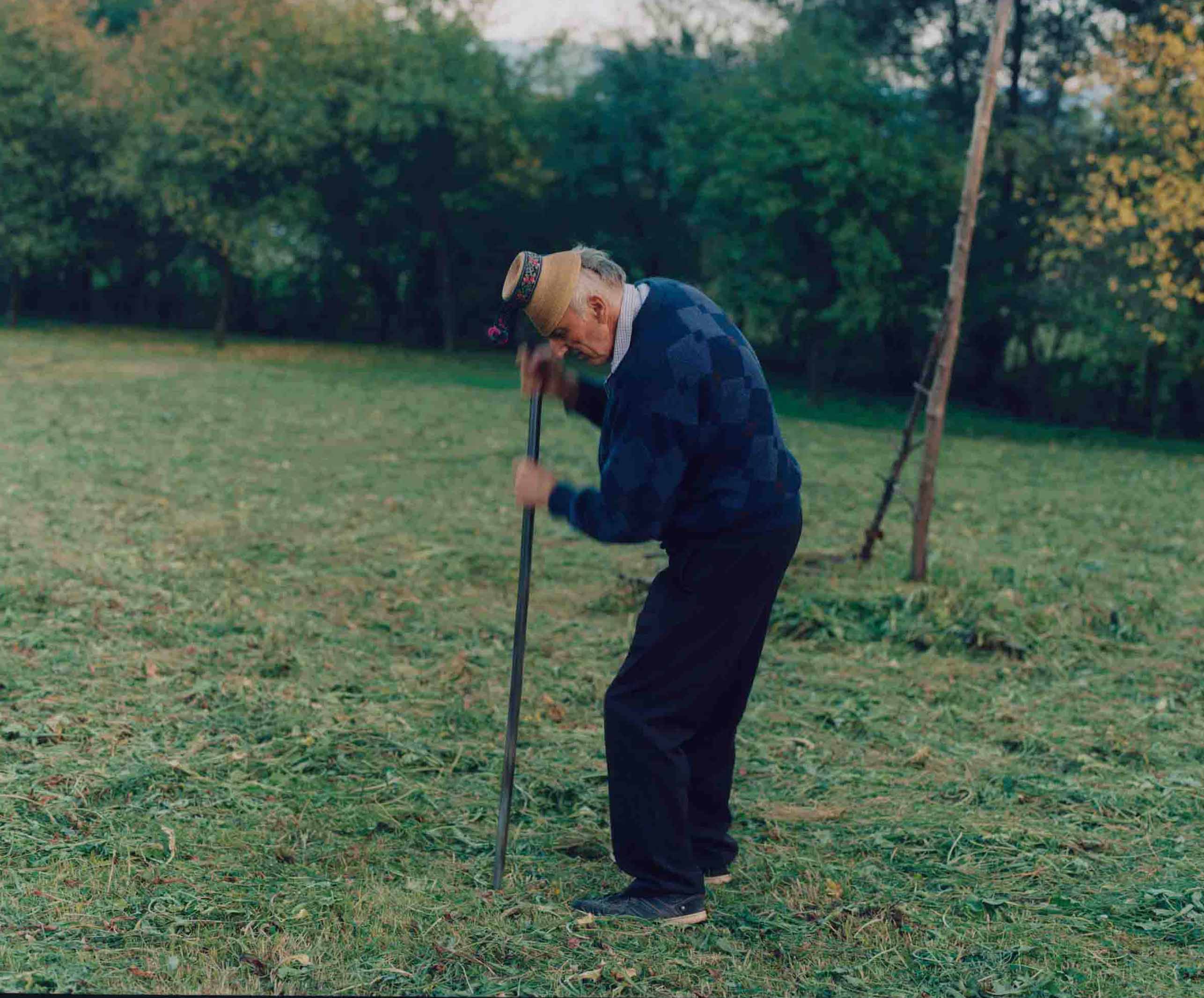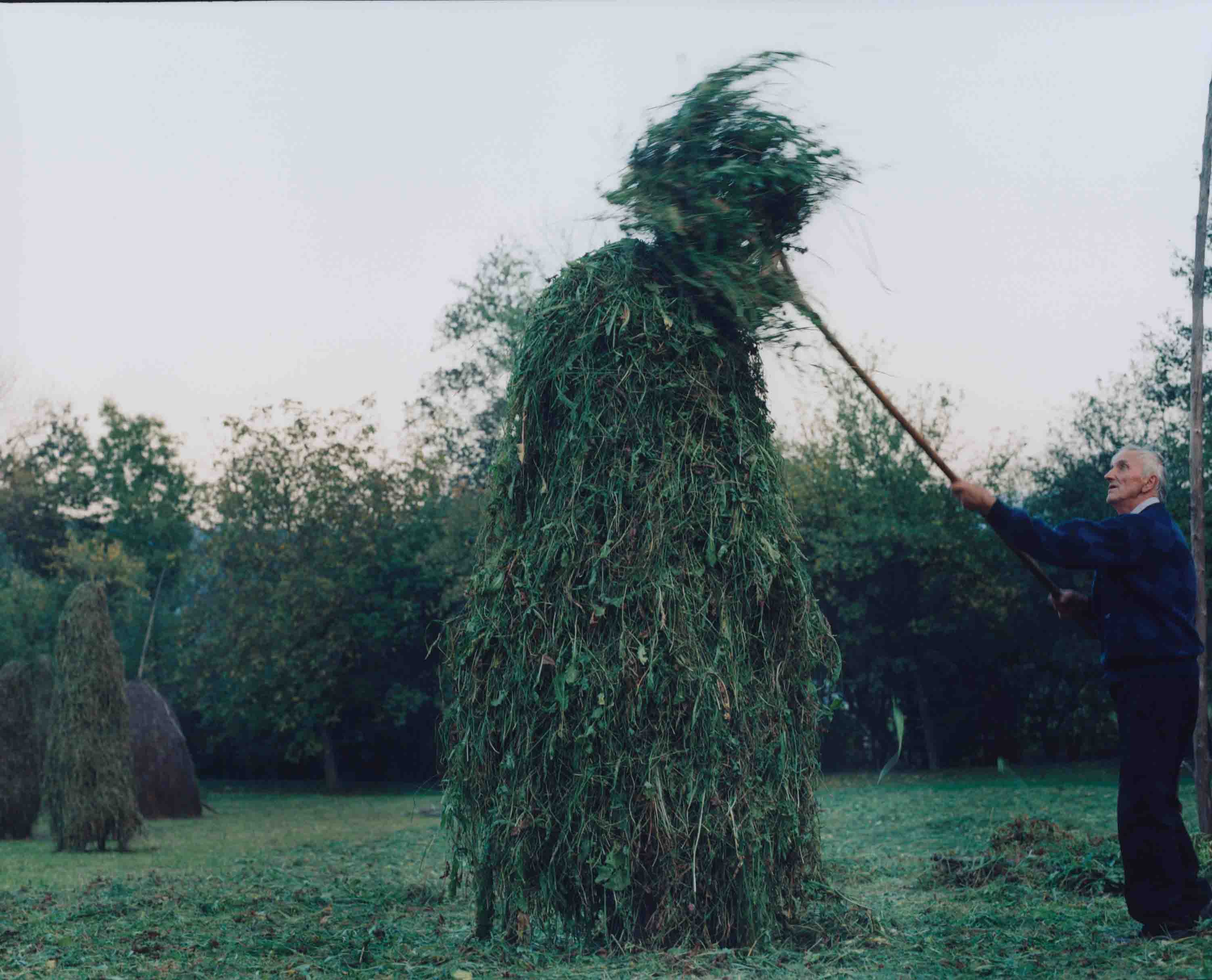Romania is just over 100 years old. To understand Romania is to understand that, for many, it is not Romania.
Once upon a time, it was many places and many things, to many different people.
Civilizations of the land that now make up this country have been splintered, ruptured, ruled and conquered for centuries. For a while they would prosper, for longer they would fight. Its borders have been made and remade, sewn and stitched into the fabric of its communities, leaving scars that still inform the physical and mental landscape of today. We start our journey from Romania’s second largest city Cluj, into the green beyond of the countryside, driving past sombre Soviet blocks that suture even the smallest town, a reminder of the country’s last, not-too-distant occupation.
Arriving in Sâncraiu, it is from our first broken conversation that we quickly understood the Romania of today to be divisive: a fault line to those who live within its realm. Here, we were staying among Hungarians, not Romanians, in Transylvania, which belonged to Hungary not Romania, declared our host István. He guides us knowingly to a laminated book nearby, which as he flicks through its pages, one on top of the next, puts plainly the difference between Romania and Hungary’s cultural heritage. This was a territory steeped in layers of narratives, with much to be told.
Heard and felt. Recast, retold. A picture book far and wide. A land stretched before high mountains cloaked in trees. Great forests. Every leaf a shade from green to red. A thicket of likeness and contrast.
Serpents of steam rise from pots on roofs. Mist hovers in neat pockets. Footprints of dew. Roses pruned to perfection. Single rows, tall blades of grass, drinking in the October air and sunshine.
On the street stands an old house. Age and names carved above a wooden gate, along with tulips. Each window peering, gleaming with poised pots of jam. Eaves heaving, with memories and moments unseen.
In lace-lined hallways cabbages nestle. Grapes fill bowls. Garlands of alliums and corn, resting.
A bench out in front, its reluctant smile, a pensive expression, where a woman, weathered skin, sits and listens.
A barn stands to its far left, soft earth flows from its mouth. Chickens wander freely.
Heavy wagons sigh. Horses trot on steel-lined shoes. The scene is set. Clip, clop, clack.
Entering into this geography to see what it would give me, I was surrounded by abundance. My mind started to fill with tales, ripe for the telling. Everything’s for real. Mythical, carnal, uncanny. Romania was an enchantress you were unable to ignore. Some things can only be comprehended by being in a place; it didn’t have to make sense.
Youth without age
We are here for a festival. A bright and brisk afternoon meets us for The Grape Harvest, a coming-of-age, annual gathering.
Silver chains tucked under traditional dress. Hair braided in ribbons, iPhones in hand, headscarves tied neatly around waists, cigarette butts crushed into the ground. Family members congregate as confirmation-aged boys and girls arrive to parade through the streets. Girls are piled into a cart while boys ride on horseback, and even younger boys wearing masks follow on a donkey to chase them. The tradition is going slowly down, explains one of the younger girls, in response to our questioning why one girl arrives on her partner’s horse. She visibly raises her eyebrow.
An outfit change and dancing rounds off this fleeting celebration of youth, as the clock strikes twelve, they fragment, until next time. The young couples swirl on a dancefloor, as many much older sit on the sidelines, looking on. In the evening we sip firewater and eat ciorbă, Romania’s staple dish of sour broth, meat and seasonal vegetables. I stir my bowl and my thoughts as the days unfold, drinking it all in.
Looking back, this ceremony had felt out of place on our journey. I’m unsure why, until I realize the answer lay in the sea of young faces we had met. For one day only, the village’s fountain of youth. Depopulation is very noticeable here: the young grow, reach adulthood and leave. The men and women we speak to tell of their sons and daughters in Bucharest, Romania’s capital, or living in cities in entirely different countries.
Onto Maramureș. Into the clutch of the formidable Carpathian Mountains, whose peaks have prevented many invasions that befell Romania’s not-so-fortunate, mountainless lands. In our car we climb and descend horizon and history. Behind, across and beyond the woods, wood on every side, the lifeblood of Romania.
Life without death
Woodland, wooden churches, wooden crosses at gravesides. Trunks, stumps, planks, pillars, sticks, stems. Whittled, felled and bent. They told us everywhere wood was of utmost importance, it had built and sheltered this successive and self-sufficient nation. As we drive onwards, I notice from my passenger seat countless abandoned stork nests, crowns of branches atop concrete pylons.
With our local guide, Karin, we trace cultural and religious artefacts over Maramureș’ four valleys, Viseu, Iza, Cosău and Mara, and learn amongst numerous tales the intricate process involved in building the region’s iconic wooden churches. Traditionally, the wood is cut at spring equinox, given blessings by the priest, and left to dry for seven years. We stare up at a church built in 1643, still mightily intact. Sitting on river stones, the narrow, characteristically tall clock towers are covered in shingles, roughly 60,000 pieces. Everything is handmade. We didn’t have anything else, Karin shrugs, so we used wood.
These churches’ long survival lies in their construction. When Mongol, Tatar or Muslim invaders moved in, so too moved the churches. Their wooden joints are built like a puzzle, an ancient system allowing for a place of worship to be fully deconstructed and rebuilt in a safer setting. Wooden gates and houses are designed this way too.
Industrious and resilient, the Maramureș church is the embodiment of the Romanian people’s spirit. And their obsession with protection, Karin says, as she tells us what is both hidden and amiss in the usual iconography and motifs found within this stoic giant’s walls. In Maramureș, you find magic, Karin muses eagerly, the most important, carved in wood.
We walk through sacred portals carved above with symbols. The seed of life, the double rope, a spiral, the ouroboros snake eating its own tail. Entering one church we see a doorway fixed with mystical sacred geometry, on its ceiling Jesus surrounded by sun, moon and the zodiac: replacing the customary cherubs and halos.
Karin explains that Maramureș is not an ordinary religious community. Rooted within firmly held Orthodox Christianity, it bears the strands of ancient beliefs, customs and superstitions, which have quietly taken their place in the behemoth of the holy. These are pagan symbols in an Orthodox church, she says. It’s not normal, they don’t belong in a Christian church but still you find them. I never understood how these two co-exist, you’re either superstitious or religious. Karin is quizzical, somehow here, you are both.
After churches and monasteries we followed death for a while, visiting cemeteries and welcomed to witness a village funeral. A rousing service in a loved one’s courtyard quietly unfolded, patient and poignant, with hymnic verses, stacks of beeswax candles, and edible gifts wrapped up in yellow plastic bags, produced from a white van. This form of remembrance was beautiful. We cried as they did.
With one last breath,
disrepair and despair,
they tore the house down, beneath a vast sky,
timber for tinder,
a house was built over the scorched ground, a big iron fence with
an iron gate.
That was a new ending.
A lot of tradition revered in Romania has been lost. The countryside is not exempt from Eastern Europe’s drive for modernization amidst the post-Soviet imagination. However folkloric our experience of this place may feel, modern encroachment has led to a desire for disenchantment. Here and now, it is normal to burn their wooden homes. We are staying in The Village Hotel, a living, historical re-enactment that upholds Romanian architectural tradition, made up of houses and furniture saved from flamed fate. Out with the old, in with the new. Tradition is going slowly down, that sentence we heard in Sâncraiu echoes in my ears. I want to literally shield my eyes, and my words, from the brash new breeze block buildings. Many half-finished, slowly sprawling in and around Breb, our base. But this is part of the story too.
A recurring theme in conversations with our guide Karin confirms that life as it was in Maramureș is slipping away. We are told of many crafts and crafters we visit being the last of, that we were seeing what’s left. But in the same breath Karin speaks of a steely reserve for preservation, to rescue the indigenous before it fades forever. Forget-me-not. A will, asserted by many others we meet too.
Along the enchanted way
In daylight hours, before the yearly frost sets in, those who live in Romania’s countryside are found in their fields. This is where we head to find a local man, Vasile Oanea, famous for capturing Breb’s community on camera for decades. Vasile Oanea is in his orchard, building what must be his umpteenth haystack. A Romanian haystack is different from a Western one. Anthropomorphic, they loom large in every acre we pass on our trip. Standing loftily in place, made of branches and grass, the haystack is vital to feed cattle through the unforgiving grassless winters here.
Each is a feat of agricultural craft. Great care is taken over them, as Vasile happily shows us, twining the raked hay in twists around its wooden frame. Only then can the grass be piled, lifted by pitchfork and finally combed to ensure rainwater runoff; for the hay to do its job correctly, it must be dry.
A skill passed down through generations, these haystacks appear as vessels of hope. Year after year they are built to sustain life. Vestiges of the past that continue to be honoured in the present.
Jauntily they stand
together,
one, two, three,
unfurl their limbs,
gathered for greater purpose.
Cut-and-come-again.
The sun beats down hard and brambles draw back their thorns,
a floor of walnuts and apples fill our field of vision.
Foothills a shade of purple. Nettles inscribed in mossy crags.
Plants impending, from fallen leaves they bloom.
A plot of bounty.
“This too shall pass,” the story told itself.
The seasons are cyclical, the death of winter is not the end, it precedes spring, the beginning. In the Christian faith, Jesus dies only to rise again. In nature, a tree is coppiced, cut back to allow for new shoots. A Maramureș church is taken apart, to be put together again, stronger. Perhaps when a culture and all that it encompasses is brought to the brink, it is here it will find new growth, greater meaning. Kindle for rebirth.
For Romania’s traditions, rebirth comes from the appetite of tourism. People come in their droves, seeking fairy tales, wolves, bears, gold and castles. Fairy tales don’t often have a happy ending, but that depends on who is telling them.
For Romania’s traditions to have a happily ever after, they must be the project of not just those who come to discover its beauty, but its own people and government too. They will decide what lives or dies. I remember discussing this with Karin, to which she visibly laments, can you imagine, Romania doesn’t even have its own tourism website!
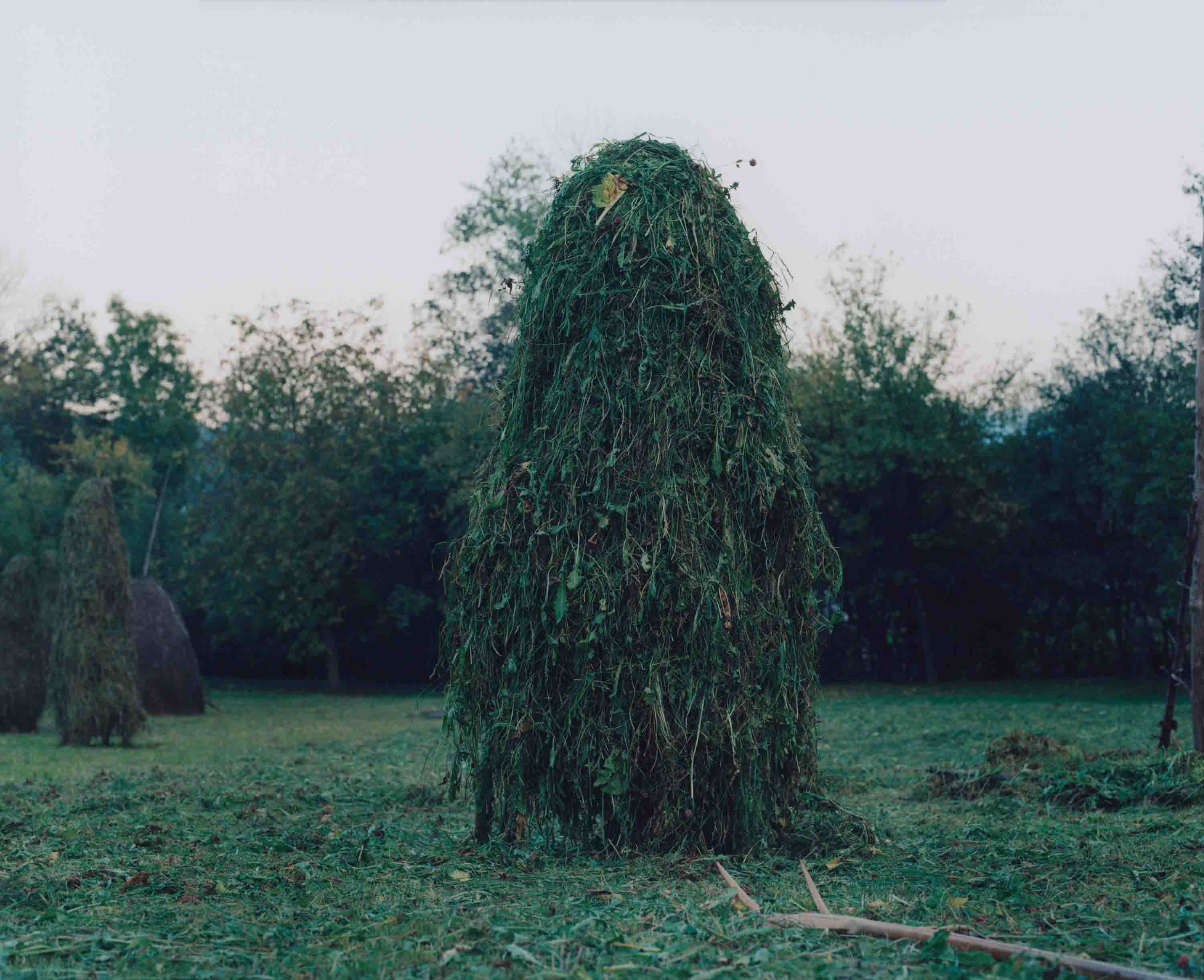
More ciorbă, more firewater. We are fed so much information on our encounters, scattered now in my mind to be put later in place. Why do we tell fairy tales? In their beating heart, warnings, lessons. They inspire our imagination. They help us confront our fears. They encourage us to think critically. They teach us that we live in a world where good and bad co-exist.
Romania is a living fairy tale. A balance of the light and dark, timeless beauty, great hardship, and resolve. With the passing of time, a fairy tale is recast, retold. Heard and felt in many places to many different people.
Under a full moon, and our last night here I drift off to the sound of the neighbouring stream.
Tap, tap, tap.
It’s dawn, and I wake to see my locked balcony door is wide open. A woodpecker rapping on the wall. Some things can only be comprehended by being in a place; it didn’t have to make sense.

